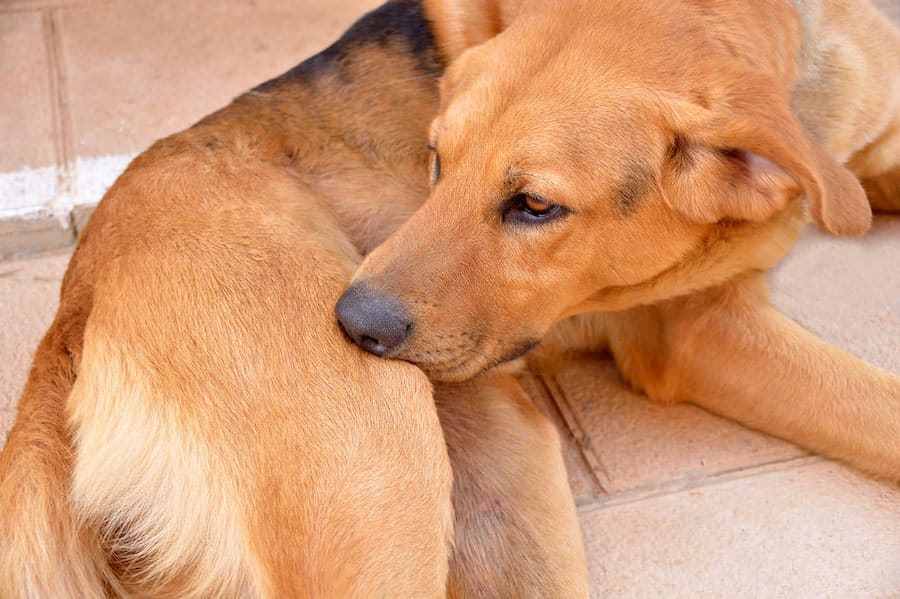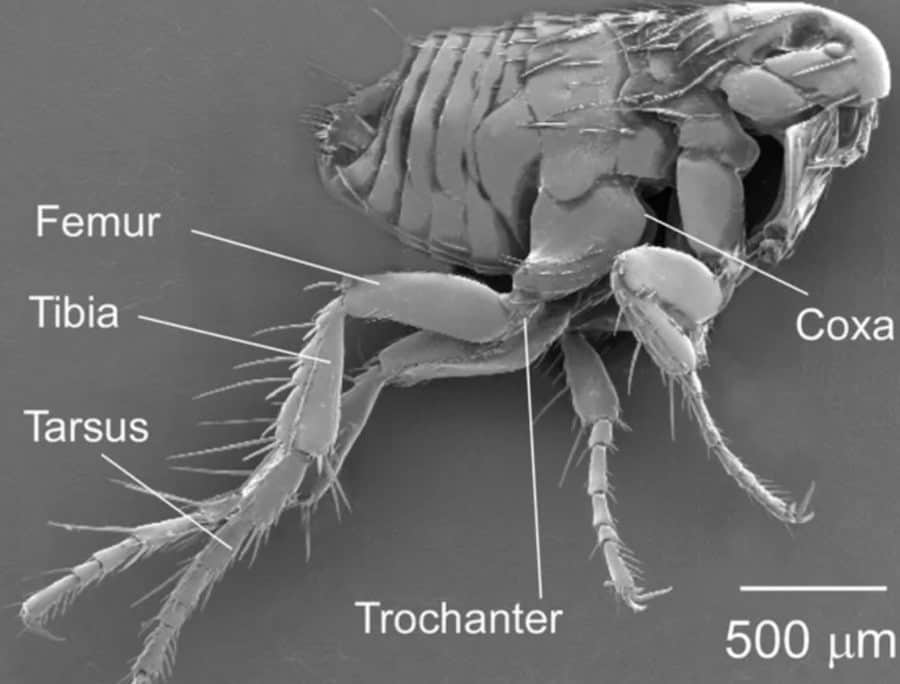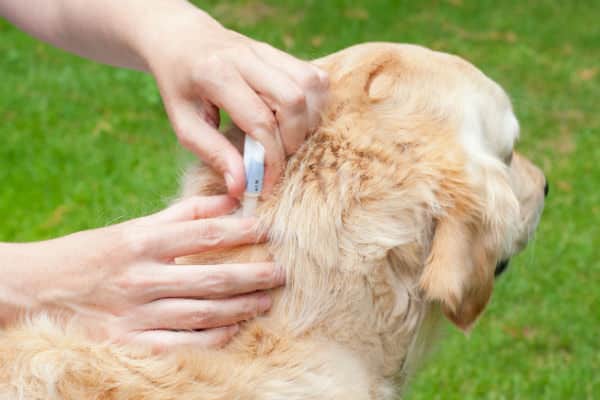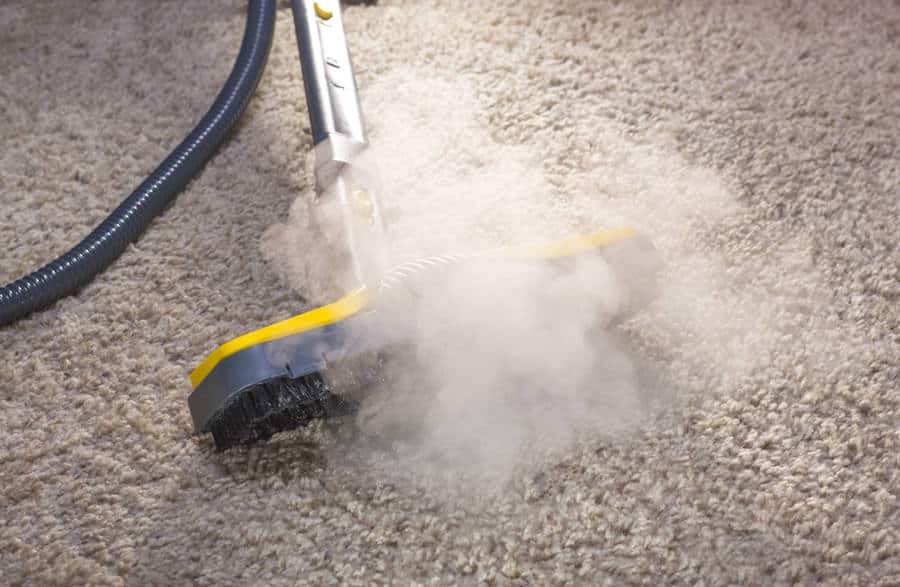Can You See Fleas? How Big Are They?
Fleas are tiny parasitic insects that live off the blood of their hosts, such as cats and dogs. Fleas are usually brown, a reddish-brown color or black and can be tricky to spot. They can be seen with the naked eye but they’re difficult to spot in the fur coats of animals, and in carpet or furniture fibers.
How Big Are Adult Fleas?
An adult flea is 1.5 to 3.2 millimeters long and mostly dark brown in color. Female adults are larger than males and the average size of a female is 2.5 millimeters. Males can be as short as 1 millimeter in length.
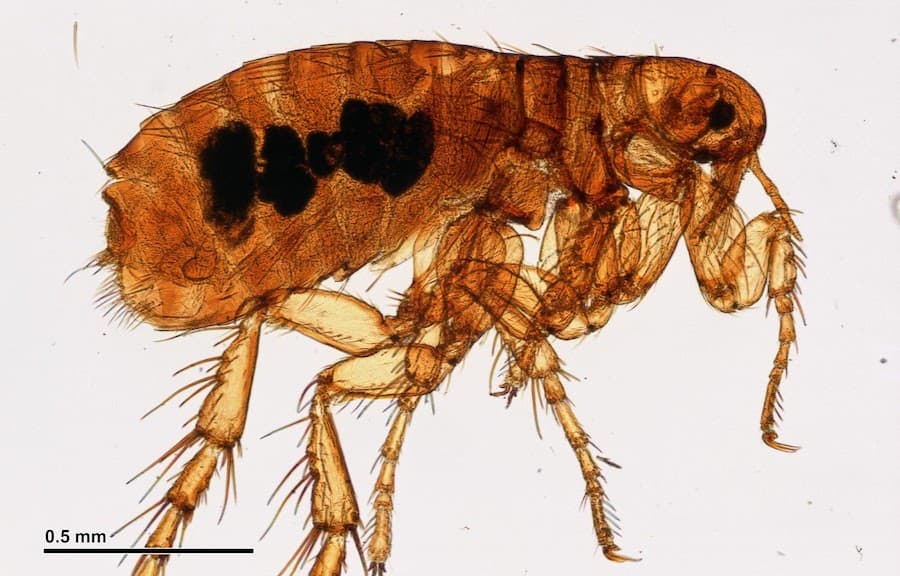
One of the reasons that fleas are hard to spot is that when they find a suitable host they will not move. When it’s found a supply of blood the flea is happy to stay there to feed and the female lays her eggs on the host.
The flea is a true insect and therefore has 3 body segments and 6 legs. The 3 body segments are the head, thorax and abdomen. The body of the flea is narrow appearing as if it’s been squeezed from both sides.
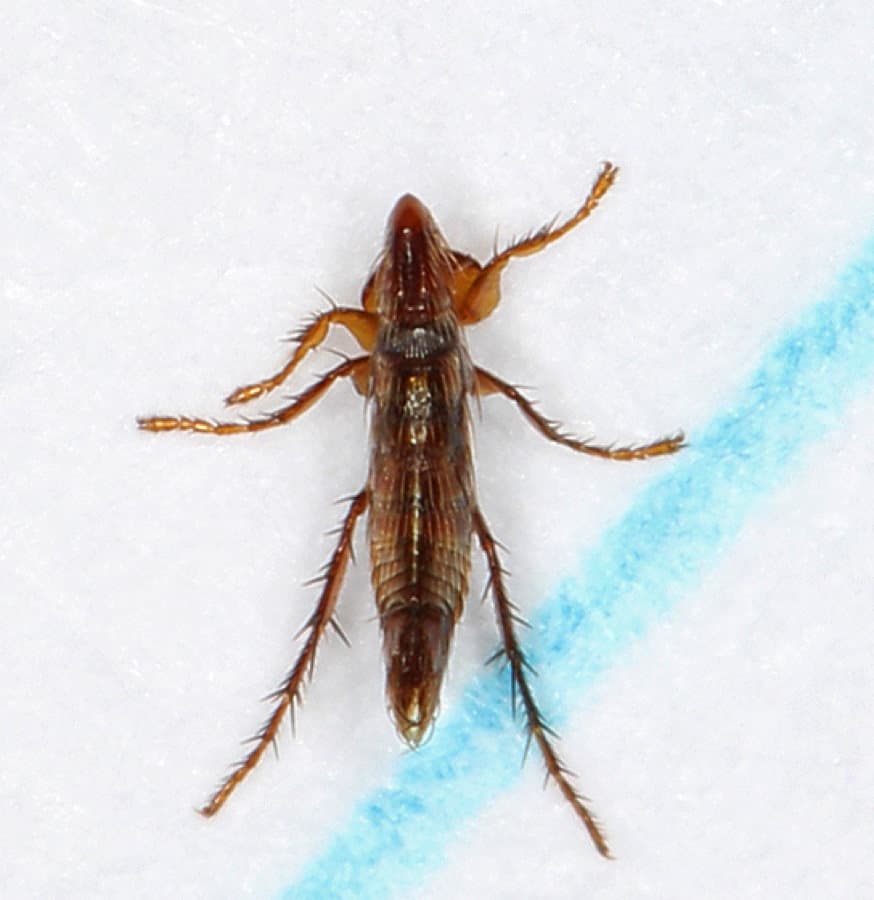
The body of a flea is protected by plates which are called sclerites. These hard plates protect the flea from animal bites and injuries when they jump. The body is covered with hairs that point backwards from the head.
The flea has a glossy appearance due to glands located at the front of the body. These glands secrete an oily substance that gives the flea’s body a sheen. This sheen enables fleas to move easily through animal fur and other fibers.
Head
Fleas have narrow heads which makes it easy for them to get through animal fur and carpet fibers. The head has 2 eyes but unlike most insects that have compound eyes, the flea has simple eyes. The eyes are dark and round with single biconvex lenses.
The head of the flea is equipped with an antenna which is responsible for the insect’s senses. The antenna detects touch, smell, humidity, vibrations and temperature. The male has a longer antenna than the female which he uses to hold the female when mating.
The flea has a mouth which allows it to pierce the skin of animals and humans to suck blood. The lower lip of the mouth contains 3 stylets, and the middle one is used to extract blood from the insect’s host. The structure that makes up the piercing mechanism is called the fascicle.

Thorax
The thorax is made up of 3 segments which are metathorax, mesothorax and prothorax. The rear parts of each segment overlap each other which allows them to squeeze together. The joint of the fleas thorax are flexible which helps them to move more easily.
Abdomen
The abdomen of the flea has 10 segments with only 8 of them being visible. Female adult fleas have larger and heavier abdomens than the male. The female abdomen has a rounded backside (dorsal) and the males dorsal is much flatter.
The male abdomen has a more curved underside which sometimes makes them look like they’re upside down. Inspecting the abdomen of a flea is one of the ways to determine its gender.
The size of an adult flea will change depending on whether it’s sucked any blood. Before consuming a blood meal the 10 segments of both the male and female fleas abdomen overlap. The flea is, therefore, smaller and more compact prior to feeding.
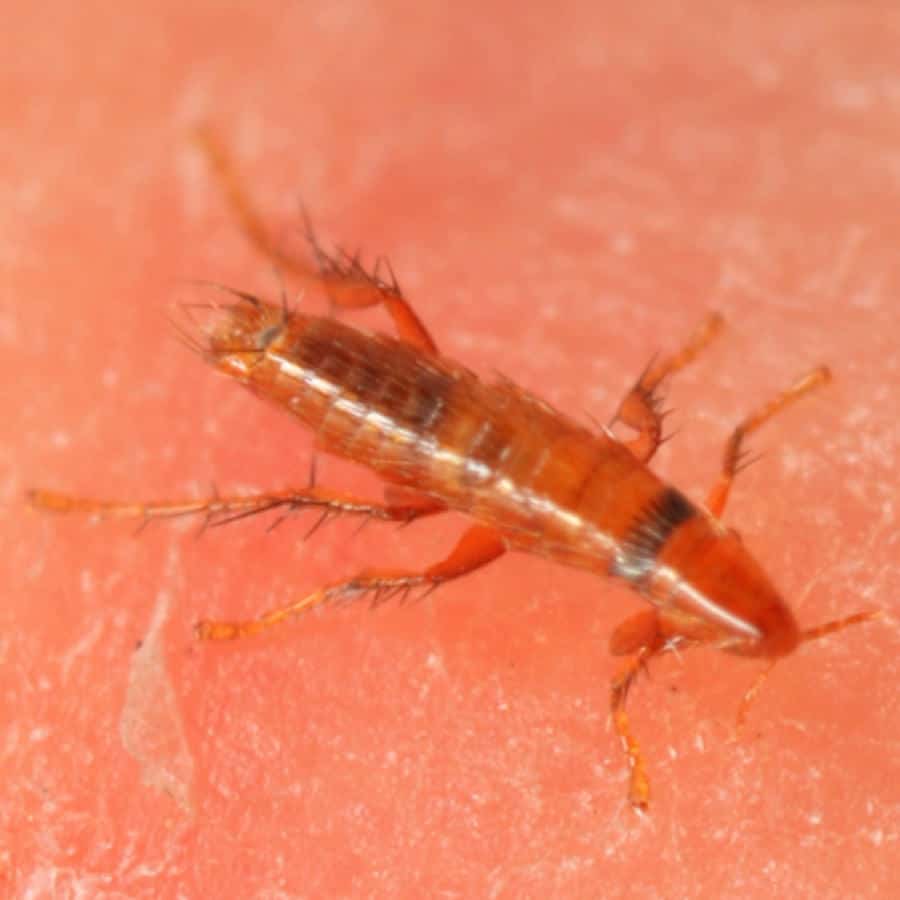
As soon as blood is consumed, the 10 abdominal segments will open to accommodate the blood. When the blood meal has been consumed the segments expand and the size of the flea increases. Following a blood meal, the size of an adult flea can double.
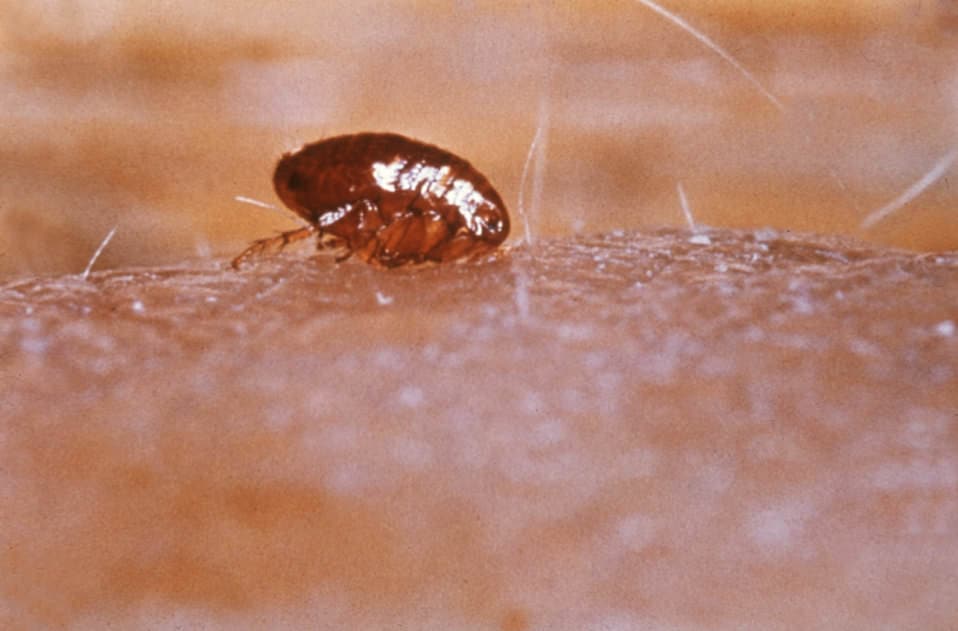
Looking at the final segment of the abdomen the genitals are visible and there is a sensilium. The sensilium (a sensory organ) detects temperature, movement and vibration. This sensory organ is vital to the flea as it helps it to locate a host to feed off.
An adult fleas lifespan is usually 2 to 3 months but they can live up to 12 to 18 months depending on the environment. If the temperature, humidity and source of blood are perfect the flea will live longer. If there is no host for the flea to feed off it will die within a couple of days.
How Big Are Flea Eggs?
Flea eggs are semi-transparent, white and they are ovoid and shiny. The tiny eggs resemble grains of salt and are 0.5mm in length and 0.3mm wide. Although they’re minute the eggs can be seen with the human eye from close range.
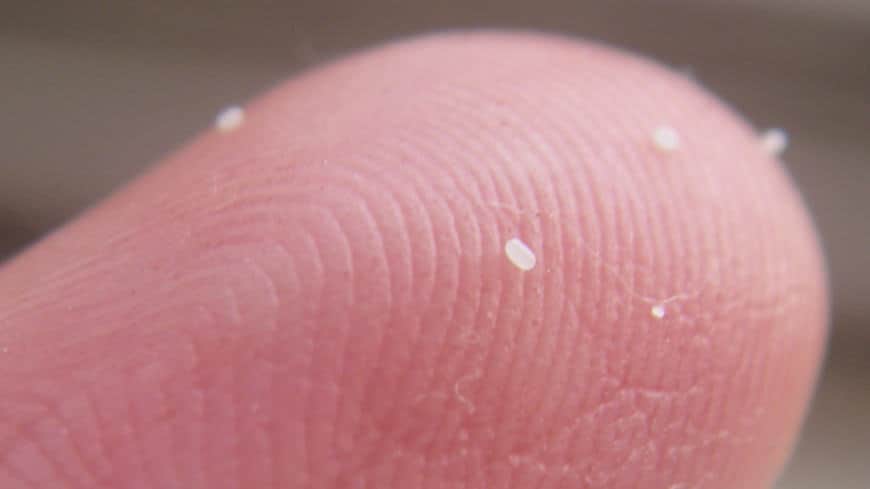
When the eggs are on light-colored pet fur or carpet they’re very difficult to spot with the naked eye. As the eggs mature, they take on a slightly darker color and may be easier to see. When the eggs are laid they’re sticky and wet but quickly dry after a couple of hours. The eggs shouldn’t be mistaken for flea dirt, which shows up as a much darker color.
Flea eggs are fragile, and can be easily damaged due to their gel-like structure. The wall of the egg is only one picometer thick and the larvae can be seen through the thin semi-transparent eggshell.
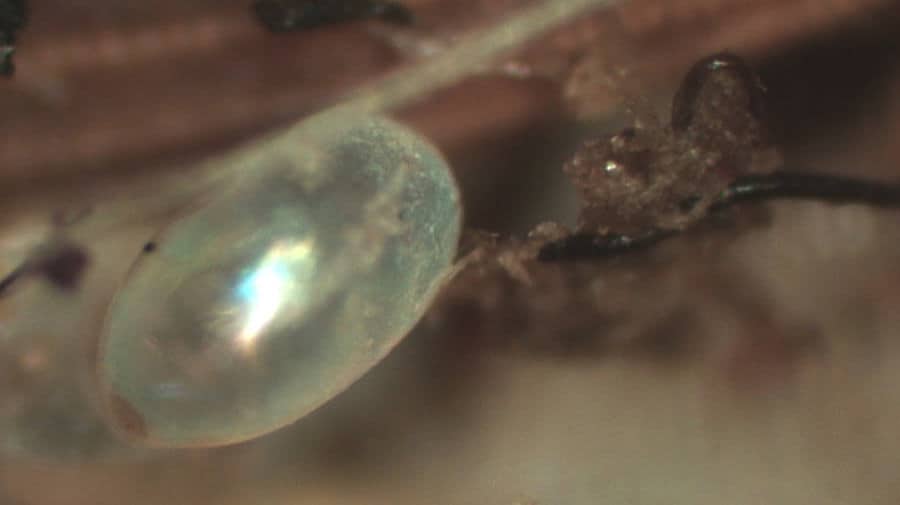
Depending on the species a female lays as little as 2 eggs after consuming blood or as many as a few dozen. In a lifetime the female can lay thousands of eggs. The eggs then take 1 – 12 days to hatch into larvae.
How Big Are Flea Larvae?
When flea larvae hatch from the egg they’re two millimeters long and easy to see with the naked eye. However, it’s rare to see flea larvae as they hide away in carpet fibers, crevices and dark places. Flea larvae are blind, negatively phototactic and they avoid sunlight.
Flea larvae develop through three stages which are known as the first, second and third instars. The larvae don’t have legs but have bristles which allow them to move around. Through each stage of development, the larvae sheds the bristles and increases in size.
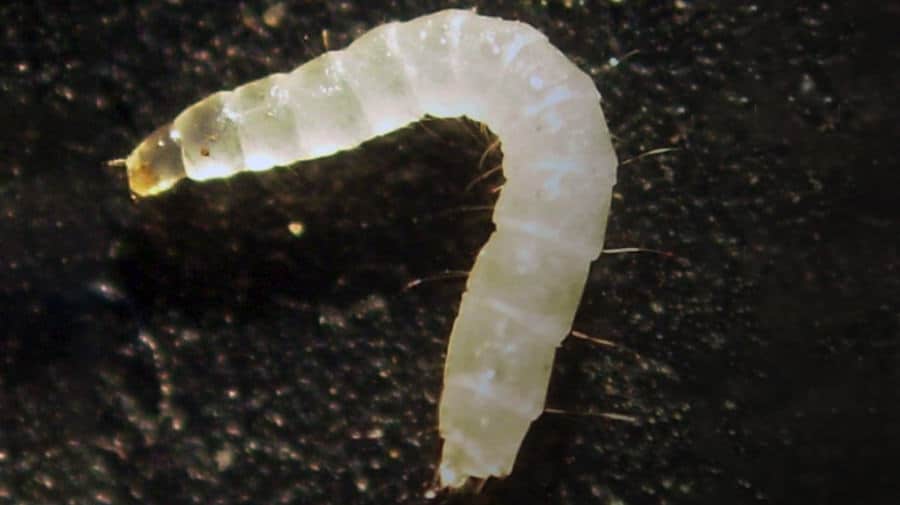
As the larvae are developing they feed on debris such as dead skin, organic matter and adult flea feces. When the larva has eaten debris, it changes color from translucent white to a reddish-brown.
When the larvae reach the prepupae stage they’re four to five millimeters in length and half a millimeter wide. This is double the size of a fully matured flea and just before pupating the larvae become shorter. At this stage, the larvae begin to spin a cocoon ready for the next stage of life.
The larval stage is from 4 to 18 days at which point a silky cocoon is woven.
How Big Are Flea Pupae?
When the silk cocoon has been woven it’s four to five millimeters long and one millimeter wide. The cocoon folds itself over into a U shape and continues to spin silk. The silky outer coating of the cocoon is sticky and attracts debris to camouflage itself.
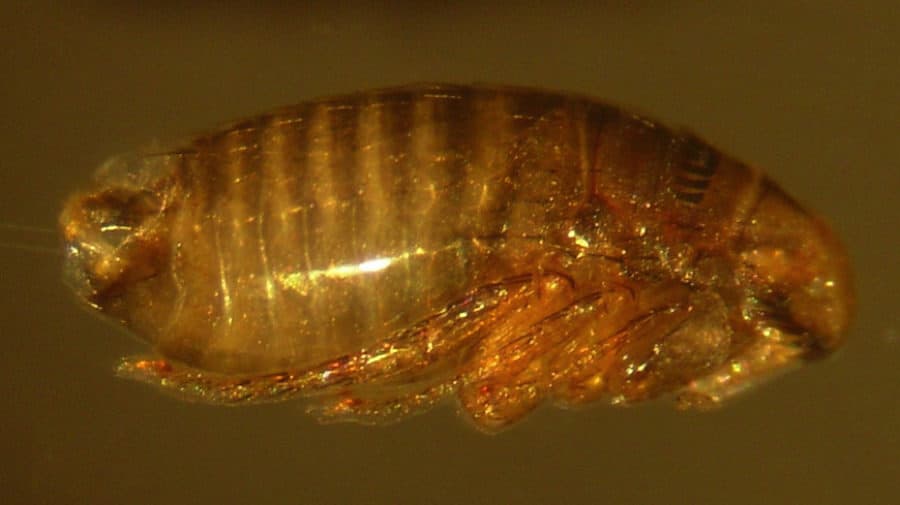
The accumulation of debris may make the cocoon look larger than it actually is. The width of the cocoon can increase to two millimeters. The cocoons are oval in shape and they often look like small lumps of earth.
Although the cocoon is large enough to see with the naked eye they tend to be tucked away in dark places. The cocoons hide in carpet fibers, furniture and small cracks in flooring. The debris that has stuck to the cocoon makes them difficult for most people to identify.
In some cases, a naked pupae will develop and there will be no cocoon. The naked pupae closely resemble a fully matured flea and some of its features are clearly visible.
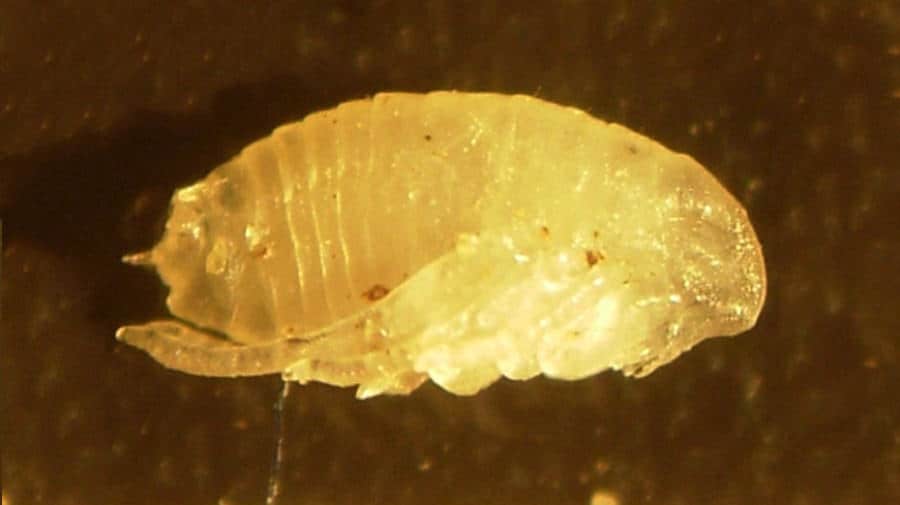
The pupal stage may be short and the adult will emerge after a few days but it can take up to a year depending on the environment. Fleas are able to survive in the pupal stage for several months without a host.
How to Tell a Flea From Other Insects
It’s easy to confuse fleas with other insects such as bed bugs if you’re not an expert. Fleas are smaller than bed bugs and more oval in shape which makes them easier to identify. Fleas are more slender than many other insects which is another characteristic that sets them apart.
The majority of insects have wings and are able to fly, but fleas don’t have wings, which can help to identify them. Fleas are great jumpers, and their hind legs are long and powerful. An adult flea can jump as high as 18 centimeters vertically and 30 centimeters horizontally.
Summary
Through all four life stages, and before and after feeding, fleas are tiny but can still be seen with the naked eye (just). What makes it difficult to see them is their color, their ability to hide, and the fact that they move so quickly.

